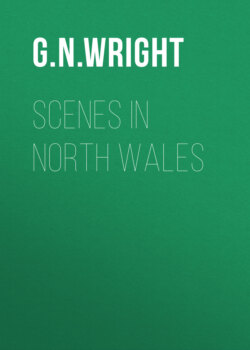Читать книгу Scenes in North Wales - G. N. Wright - Страница 4
На сайте Литреса книга снята с продажи.
ANGLESEA.
ОглавлениеTable of Contents
Anglesea, the Mona of the Romans and the Mon [1] or Ultima Thule of its still more ancient occupants, is the most western county of North Wales. Its shores are washed on the north, west, and south by the waves of the Irish sea, while the Mænai strait insinuates itself between this shire and Caernarvon. Here the beautiful scenery associated with the name of Cambria is only to be enjoyed in the distant prospect, the level, unwooded surface of the island presenting nothing of pictorial or romantic interest. Only two eminences of any consequence, vary the monotony of the landscape, Holyhead Mountain and Parry’s Hill, the latter containing that wonderfully productive mine of copper, whence two families, now ennobled, have drawn the chief parts of their princely fortunes.
The consecrated groves of this district, suited to the deep and wild mysteries of the arch-druid, became extinct soon after the destruction of the order itself by the Romans, under Agricola; but the celebration of the savage festivals of this mysterious people—
“Rites of such strange potency
As done in open day, would dim the son,
Though throned in noontide brightness,”
are attested by the existence of numerous cromlechs, circles, and sacrificing stones, in every direction over the island.
The Cambrian Alps present a scene of great beauty, dignity, and sublimity, to the inhabitants of Anglesea. Emerging from the sea below Caenarvon Bay, and ascending gradually to their point of culmination in the peak of Snowdon, they descend again in shattered ridges towards the north, where the lofty Penmaen Mawr terminates the chain. No rivers of importance diversify the surface of this insulated county; but the banks of the Mænai strait are delightfully wooded and adorned with numerous seats and villas. The towns of Caernarvon and Beaumaris, as well as the city of Bangor, are agreeably seated on its opposing shores.
